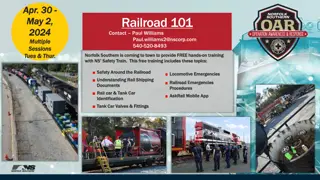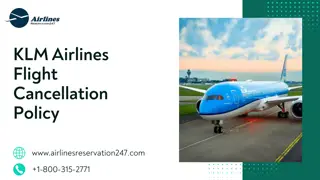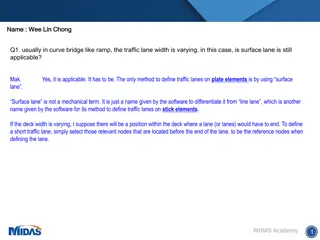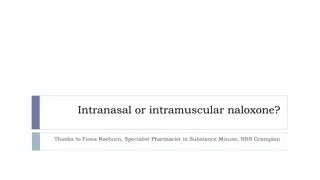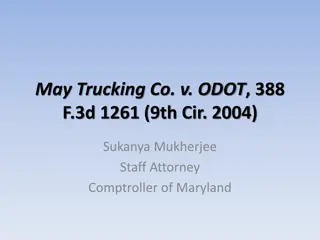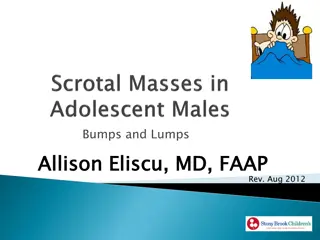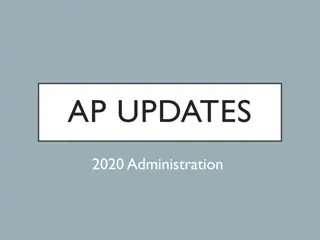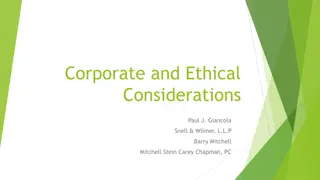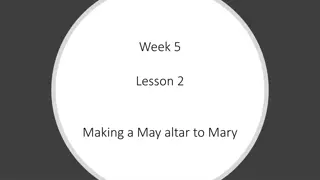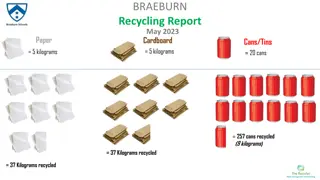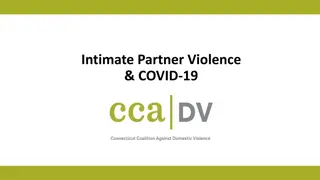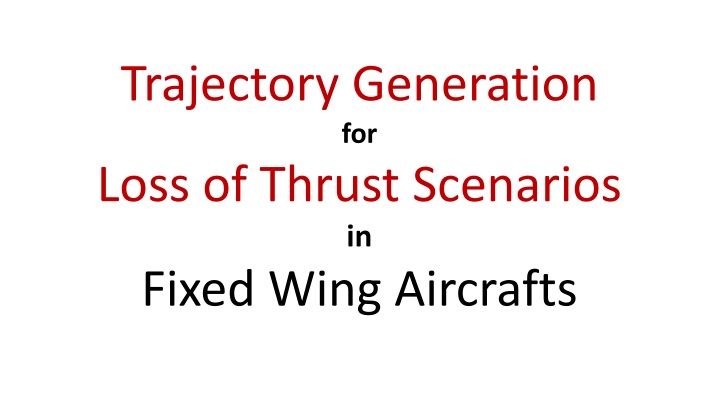
Enhancing Trajectory Generation for Fixed-Wing Aircraft Safety
Explore improvements in trajectory generation for loss of thrust scenarios in fixed-wing aircraft, focusing on creating safer trajectories to maintain ideal glide paths, avoid obstacles, and consider safety metrics for altitude, turns, and more.
Download Presentation

Please find below an Image/Link to download the presentation.
The content on the website is provided AS IS for your information and personal use only. It may not be sold, licensed, or shared on other websites without obtaining consent from the author. If you encounter any issues during the download, it is possible that the publisher has removed the file from their server.
You are allowed to download the files provided on this website for personal or commercial use, subject to the condition that they are used lawfully. All files are the property of their respective owners.
The content on the website is provided AS IS for your information and personal use only. It may not be sold, licensed, or shared on other websites without obtaining consent from the author.
E N D
Presentation Transcript
Trajectory Generation for Loss of Thrust Scenarios in Fixed Wing Aircrafts
Objectives Improve existing solutions Create safer trajectories Fig:- 3D Dubin s path generated by Atkins that has a steep turn very close to ground and would be very impractical
Existing Work Ella Atkins Shortest Dubins curve to destination Restrains glide path angle in range Adds one additional turn if necessary Randal W. Beard and Timothy W. McLain Dubins airplane curve 3 types: Low altitude: direct Dubins Medium altitude: S-turn High altitude: Helix
Improvements to Existing Work 1. Maintain an ideal glide path for as long as possible 2. Generate safer trajectories Avoid getting too far from the airport Avoid steep turns close to ground Avoid generating trajectories with maneuvers that might not be possible for a pilot to implement in emergency situations 3. Avoid obstacles
Safety Metrics 1. Average altitude over terrain Metric (favors Trajectories with high average altitude) average altitude max altitude Average bank angle on turns Metric (favors trajectories with lower bank angle on turns) max possible bank angle max bank angle max possible bank angle Minimum distance from an obstacle (favors trajectories with higher minimum distance from obstacles) 1 if no obstacles distance d from path min distance from obstacle d Where d is the minimum allowed distance from any kind of terrain 2. 3. otherwise
Safety Metrics 4. Number of turns Metric(Favors less number of turns) 0 if more than C turns ? ?????? ?? ????? ?? ?????? ? 5. Minimum altitude of steep turn Metric (Favors steep turns at high altitudes) ???? ????? ?? ?????? ???? ? ???????? ???? ?????? Average distance from the landing site Metric (Favors less distance from runway) ??? ???????? ???? ??????? ???? ??????? ???????? ??? ???????? ???? ??????? ???? Visibility Metric (Favors trajectories with complete visibility) 1 ?? ??????? ???? ?????? ??????? 0 ?? ?????? 6. 7.
2D Dubins Four Possible paths for a given bank angle The one with the shortest total length is selected ->
3D Dubins: Low altitude Optimal rate of descent for straight and curve sections Will lead to key landing point
3D Dubins: High altitude Too high to land within flight angle constraints Fly to key point, then helix until low enough to land
3D Dubins: Medium altitude Too high to get to key point directly, but too low to add a full helix Add an intermediate turn
Obstacle avoidance in the straight line segment of Dubins path Dubin s path employed by Atkins does not inherently incorporate obstacle avoidance Traditional obstacle avoidance using exhaustive graph search can be computationally expensive and it also requires preprocessing of the data to create a structure on which graph search can be employed We aim to avoid graph search and deal with obstacles between two points of the straight line segment of Dubin s path IFF there exists an obstacle
Obstacle Representation We can define obstacles for point E as any point O such that altitude of aircraft on moving from E to O with optimum glide ratio is greater than the minimum allowed altitude at point O: HEO=?? HO = HE - HEO > ZO where HEOis the loss in altitude when the aircraft moves from E to O in a straight line EO is the horizontal distance travelled between E and O RGis the best glide ratio for the aircraft HO is the altitude of the aircraft at O ZO is the minimum allowed altitude at O. ??
<Top View> Generated almost instantly without any graph search or preprocessing
<Top View> Actor(or thread) 1 Actor(or thread) 2 Paths failed because of altitude
Starting point E of straight line segment
Advantages :- No unnecessary computations are done unless there are obstacles Since each trajectory is generated independently, even if search in one direction fails, it does not affect the search in other directions A Concurrent approach allows us to harness the power of online resources for computation in case of an emergency if necessary Can generate flyable trajectories by placing necessary aerodynamic constraints on the paths Limitations :- Sacrifices optimality for generating flyable trajectories with minimal computations Assumes that the communication cost between actors is negligible
Work to be done Finding a way to determine whether curved segments of a Dubin s path intersect obstacles and avoiding them Finding a way to properly model terrain and decide on the granularity of terrain representation. Terrain classification to detect and decide on unconventional landing zones(rivers, fields, highways) in case of absence of traditional runways in vicinity.

